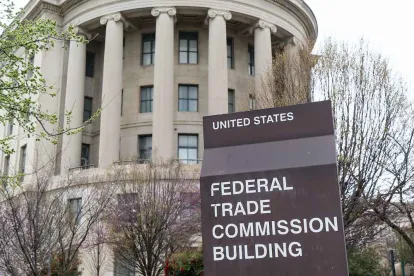In a unanimous opinion authored by Justice Breyer, the U.S. Supreme Court held that Section 13(b) of the FTC Act (“Act”) does not authorize the Federal Trade Commission (“FTC”) to seek monetary relief in the form of restitution or disgorgement, despite the agency’s redoubled practice of seeking such relief under the Act since 2012. The Court’s opinion significantly reshapes the FTC’s process for obtaining money judgments from defendants. The FTC will now most likely turn to Section 19 of the Act as its enforcement mechanism for obtaining monetary remedies, which requires the FTC to undertake several additional steps prior to commencing an action.
The FTC Act
The Act gives the FTC a variety of tools to enforce the federal antitrust laws, including administrative enforcement actions under Section 5(l) and judicial enforcement actions under Sections 13 and 19. But Sections 5(l) and 19 both entail more demanding processes than Section 13. With Section 13(b) now off the table, the process by which the FTC seeks monetary equitable remedies will look very different.
When the agency proceeds under 5(l), the FTC first issues a complaint and determines whether a violation has occurred. If so, the FTC issues a cease and desist order, which the target can challenge in court. The FTC is empowered to pursue money damages if the target violates the order.
Section 13(b) of the Act authorizes the FTC to seek preliminary injunctions in federal district court whenever “the Commission has reason to believe” a target company is violating or “is about to” violate the Act. In recent years, such injunctions—which the FTC may seek ex parte—have generally included the power to seize the target’s assets. The target often is informed of the order for the first time after the court has already authorized such relief, leaving it with reduced or nonexistent business operations and little, if any, access to funds. Given targets’ subsequent reduced ability to finance and mount a defense, targets usually settle with the FTC early in these kinds of cases.
Unlike Section 13(b), which authorizes injunctive relief that has been interpreted to include monetary relief, Section 19 of the Act explicitly grants the FTC the authority to seek monetary relief for consumers directly. To proceed under Section 19, the FTC must first determine through an administrative proceeding that the target’s challenged practice was unfair or deceptive. Its complaint must be filed within 3 years of alleged violation of the Act, and is adjudicated before an administrative law judge. The administrative law judge will either dismiss the complaint or enter an order to cease and desist the challenged practice. Parties may appeal that decision to the full Commission for review, and the Commission’s decision is then appealable to a federal Court of Appeals, and then to the Supreme Court.
Generally, a cease and desist order becomes final 60 days after it is served, unless it is stayed by the Commission or by a reviewing court. Once it is final, the FTC can commence a Section 19 action in district court to obtain monetary relief, and the FTC must commence any such district court action within a year of the issuance of the final order. In such an action, the FTC can seek monetary relief “to redress injury to consumers.” Under Section 19, a district court may grant the FTC monetary relief in cases where a reasonable person would have known that certain conduct was deceptive. This process allows the FTC to clarify the practices it considers deceptive, which, in turn, sets a precedent for what businesses should have known was deceptive conduct.[1]
The FTC Investigates and Sues AMG Under Section 13(b) of the Act
In 2002, the FTC began investigating Scott Tucker and his companies (collectively, “AMG”), for pay-day loan practices. After nearly a decade of investigation, the FTC sued AMG under Section 13(b) of the Act. The FTC alleged, in part, that the pay-day loans offered by those companies were unfair or deceptive in violation of the Act because certain aspects of the loans were hidden from consumers. AMG defended itself by arguing in part that it had no notice that the FTC considered the industry’s common practice to be “deceptive,” as the challenged aspects of the loans were routinely used across the industry and the FTC had sued neither AMG nor other pay-day loan businesses during the investigation period.
The district court agreed with the FTC and issued an injunction to prohibit Tucker and AMG from engaging in consumer lending. The district court also granted the FTC’s request that it hold Tucker and AMG liable for “restitution” to borrowers in the amount of $1.3 billion dollars. AMG appealed to the United States Court of Appeals for the Ninth Circuit. In December 2018, the Ninth Circuit affirmed the district court’s ruling, stating that it was bound by prior Ninth Circuit precedent holding that, by authorizing injunctions, Section 13(b) of the Act allowed for “ancillary relief” including restitution.
A Circuit Split Emerges
Unlike the Ninth Circuit in FTC v. AMG Capital Mgmt., LLC, when faced with a similar question about the scope of Section 13(b) in 2019, the Seventh Circuit held that based on the text and structure of the Act, the term “permanent injunction” did not encompass “[a]n implied restitution remedy.” See generally FTC v. Credit Bureau Center. In 2020, the Third Circuit similarly held that the FTC was not authorized to seek disgorgement as a remedy under Section 13(b) of the Act, pointing specifically to the FTC’s power under Section 19 as evidence that Congress did not intend to include monetary remedies in Section 13(b). See FTC v. Abbvie et al.
At the Supreme Court
Following its loss in the Ninth Circuit, AMG petitioned the Supreme Court for certiorari, asking the Court to determine whether, by authorizing “injunctions,” Section 13(b) empowers the FTC to obtain monetary relief. The Supreme Court granted certiorari on July 9, 2020, and heard oral argument on January 13, 2021.
AMG contended that the text of Section 13(b) excludes restitution because injunctive relief is necessarily prospective, while restitution is retrospective. Section 13(b) specifically refers to granting injunctive relief for ongoing or imminent harm, not to remedying past harms. AMG also pointed to the contrast between the Section 13(b) and provisions—like Sections 5(l) and 19 of the Act—in which Congress did specifically include other kinds of equitable relief. AMG emphasized that if monetary relief were available under Section 13(b), then the FTC’s explicit grant of authority to seek monetary relief under Section 19 would be rendered meaningless. AMG further noted the incongruence of allowing the agency to seek monetary restitution under Section 13(b) when it has the option of obtaining that relief through another provision that contains more robust due process protections for defendants.
Finally, AMG highlighted the FTC’s inconsistent stance on the availability of monetary relief under Section 13(b). Until 1997, the FTC did not seek monetary relief under Section 13(b), and between 1997 and 2003, it did so only rarely. In 2003, the FTC adopted a policy that it would only seek monetary relief “exceptional cases.” However, in 2012, the FTC abandoned that 2003 policy and dramatically increased the number of enforcement proceedings seeking monetary awards under Section 13(b). AMG argued that this history implied that the agency strategically adopted the new interpretation in order to avoid the more rigorous process required by Section 19.
In response, the FTC argued that restitution has historically been treated as an equitable remedy, and that courts routinely grant restitution through a court’s injunctive powers. Accordingly, Congress implicitly included in Section 13(b) the ability for a court to grant such monetary relief because the section permits injunctions. The FTC emphasized that Congress knew this history and precedent, and drafted and legislated with that understanding in mind. The FTC also noted that the Court has upheld authorizations of monetary relief under a grant of equitable jurisdiction in other circumstances. Thus, the FTC argued, the Court should hold that the injunctive powers referred to in Section 13(b) extend to “all the inherent equitable powers” of the courts, including restitution and disgorgement.
When asked about the FTC’s allegedly inconsistent historical practices during oral arguments, the FTC’s counsel responded that while the FTC had previously focused more heavily on rulemaking, once it transitioned to a greater enforcement focus, “it vigorously started invoking Section 13(b).”
The Supreme Court Sides with AMG
The Court found that “[s]everal considerations, taken together,” all indicated that Section 13(b)’s “‘permanent injunction’ language does not authorize the Commission directly to obtain court-ordered monetary relief.” Justice Breyer first applied a textualist approach to the Act, agreeing with AMG that, since “the language refers only to injunction,” the text of the statute itself does not allow the FTC to obtain monetary restitution under Section 13(b). He elaborated that, in addition to its plain text, Section 13(b), “taken as a whole … focuses upon relief that is prospective, not retrospective,” which also indicates that it was not intended to encompass monetary relief. Additionally, the Court found that the larger “structure of the Act” reinforced the limited scope of that provision, particularly as the procedural limitations under Section 19 are noticeably “absent” in Section 13.
The Court rejected the argument that injunctive relief implicitly encompasses equitable monetary relief, distinguishing and limiting the cases the Commission had invoked for that principle, and was “not convinced” that Congress had “acquiesced” to the practice of using Section 13(b) to obtain monetary relief.
The outcome was likely influenced by the Court’s perception that the FTC has focused on Section 13(b) “with great frequency” in recent years not because the text of that provision clearly authorized monetary relief, but primarily to avoid procedural hurdles. During oral argument, Justices Alito and Thomas both questioned the FTC’s historical stance on the issue. Counsel for FTC admitted, in answer to a question from Justice Thomas, that the FTC used Section 13(b) because it was “easier” to use than Section 19. Justice Alito similarly seemed skeptical of the FTC’s interpretation, particularly given a damaging memo in which a former FTC litigator acknowledged that no one at the FTC believed that Section 13(b) authorized monetary relief, but used it anyway because Section 19 was “too time–consuming.” The Court did not think that Congress intended for the Commission to use Section 13(b) “as a substitute for” those Sections 5 or 19, and rejected a reading of the Act that allowed the Commission to use it as such, finding it implausible that “Congress merely intended to enact a more onerous alternative to §13(b) when it enacted §19 two years later.”
Cognizant of the “policy-related importance” of the FTC having this tool available to deter and remedy unlawful behavior, the Court also noted that nothing in its opinion “prohibit[ed] the Commission from using its authority under §5 and §19 to obtain restitution on behalf of consumers,” or from seeking a more explicit grant of authority from Congress.
FTC Enforcement in the Wake of the Supreme Court’s Ruling
The Court’s ruling will undoubtedly have ripple effects across the business community. In a detailed amicus brief to the Court, the Chamber of Commerce emphasized that clearly defining the scope of the FTC’s enforcement power is important to “ensure that industries and markets function effectively.” For the past thirty years, businesses have faced tremendous uncertainty because the FTC has used Section 13(b) regularly and effectively to seek significant financial remedies without providing businesses with advance notice of practices it considers illegal.
The FTC will likely continue to aggressively pursue enforcement actions, but under a different method. Now, the agency may be forced to rely more on Section 19 administrative proceedings if it wishes to seek restitution. After obtaining, and, as needed, defending on appeal, an administrative order, the agency could then pursue monetary relief in federal court, using Section 19. However, to succeed under Section 19, the Commission must demonstrate that “a reasonable man would have known under the circumstances [that the conduct] was dishonest or fraudulent.” This higher bar could cause the agency to focus on bringing fewer or stronger enforcement actions.
In 2020 alone, the FTC refunded a total of hundreds of millions of dollars to 1.7 million consumers. Not all of that restitution is attributable to Section 13(b) litigation. Nonetheless, this decision prevents the FTC from using its favored avenue to provide monetary redress to those consumers who have been harmed by unfair or deceptive practices.
In the alternative, the FTC could refer more cases alleging wrongful conduct to the Consumer Financial Protection Bureau (“CFPB”), which can seek civil penalties for unfair or deceptive practices. Current FTC Commissioner Rohit Chopra, who has been nominated to lead the CFPB, suggested this approach in a dissenting statement in 2020, including recommending that the FTC should “work in concert with” the CFPB more. Additionally, the FTC will likely pursue legislative changes to reinstitute a process similar to its previous Section 13(b) process. In a statement issued shortly after the Court’s decision, Acting Chairwoman Rebecca Kelly Slaughter, urged Congress “to act swiftly to restore and strengthen the powers of the agency.”
To the extent that the agency does pursue more Section 19 cases, the transition to that mechanism will give target businesses more notice of practices the FTC considers deceptive before facing an injunction and monetary penalties in court. Section 13(b) will likely revert to its primary purpose of enjoining the ongoing violations of the statute. Instead of receiving notice via an injunction and frozen assets, business will receive some advance notice—even if in the form of cease and desist orders—and full access to the administrative proceedings.
[1] In recent years, when seeking monetary relief the FTC has utilized Section 13(b) far more frequently than Section 19. Data shows that the vast majority of the FTC’s monetary awards come from Section 13(b) proceedings. In 2019, the FTC obtained 81 injunctions and orders against defendants totaling more than $723.2 million. In comparison, the FTC only obtained $137.8 million from a total of 21 complaints through Section 19. While the FTC has regularly invoked Section 13(b) in seeking monetary relief over the past decade, such requests are relatively new—the FTC did not seek monetary relief under Section 13(b) at all for over twenty years following its passage in 1973.






 />i
/>i
